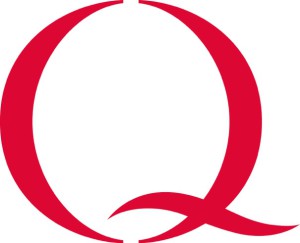Quality improvement in healthcare has undoubtedly gained momentum in recent years. If one just focuses on the NHS, the last ten years have seen a quantum leap towards embedding various quality improvement methodologies within every day practice. One only needs to look at the key NHS bodies that now exist to understand the shift towards improving quality of care for patients: Care Quality Commission (the all-powerful healthcare regulator for England), NHS Improvement (the relatively new kid on the block tasked with ‘building capacity and capability for improvement across the NHS’). Recent multi-million pound NHS initiatives have QI at their core, for example: the Quality, Innovation, Productivity and Prevention (QIPP) initiative, the work of NHS Vanguards plus the Academic Health Science Networks.

Since Lord Darzi’s Next Stage Review Final Report (main-title ‘High Quality Care for All’) was published in 2008, a document which incidentally featured the word ‘quality’ no less than 360 times, there has been a recurring theme. We’ve witnessed the emergence of bodies like Healthcare Quality Improvement Partnership (HQIP) that have managed national clinical audit since 2008. We’ve seen the NHS Institute for Innovation and Improvement produce many QI resources before being replaced by NHS Improving Quality in 2013. All this against a wider backdrop of international leaders like the Institute for Healthcare Improvement (IHI) and the International Society for Quality in Healthcare (ISQua) providing a huge range of resources, literature and case studies for improvement. And we haven’t even focused on the likes of the National Improvement Hub NHS Scotland, the work of the Health Foundation and their Q initiative (any guesses for what Q stands for?) or The King’s Fund.

In short, ‘quality’ and ‘improvement’ are now words fully embedded in the culture of the NHS. Those working in the clinical audit community have seen the impact with the National Audit Governance Group (NAGG) re-named the National Quality Improvement and Clinical Audit Network (NQICAN) and many local clinical audit teams and professionals re-branded something often along the lines of Clinical Audit and Improvement Departments.
In many ways this leap towards quality improvement with its increasing and more diverse ways of measuring the delivery of healthcare was inevitable. During the 21st Century the NHS and indeed global healthcare has increasingly been placed under the microscope. In England, there have been a steady stream of sub-standard care reports that have dented public confidence: Bristol Royal Infirmary Inquiry into the care of children receiving complex cardiac surgery, the Morecambe Bay Inquiry into unnecessary deaths of babies, mistreatment of patients with mental illness at Winterbourne View, The Shipman Inquiry that identified the GP murdered at least 250 of his patients, The Francis Report into Mid Staffordshire NHS Foundation Trust that highlighted endless failings and led to 290 recommendations. These scandals and many others not listed here have rightly received considerable attention via news and social media. The cost to the reputation of the NHS has been considerable. Moreover, the financial costs associated with rectifying mistakes and covering clinical negligence settlements has been vast. More than ever before healthcare staff, managers and executives must demonstrate the care they deliver is safe and effective and quality improvement tools to assist with this challenge have thus become part of the fabric of healthcare.

Although QI in healthcare is currently being viewed as ‘new and sexy’ the irony is that the NHS and other healthcare providers around the world have adopted quality improvement methodologies for many years. To clarify, by using the term ‘quality improvement methodologies’ we refer in effect to a toolbox of different techniques that often have their origins in other industries and commercial settings and are used to measure and improve. The NHS used Plan, Do, Study, Act (PDSA) cycles for decades to rapidly test systems and improve processes. Lean and six sigma are not new to healthcare ditto the likes of Model for Improvement, Statistical Process Control charts, process mapping, cause and effect models, benchmarking, etc.
However, what has clearly changed in recent times is the emphasis being placed on QI and the significant funding to support its evolution (see bodies listed at the start of this section). Unlike 20 years ago, all medics must now demonstrate evidence of personal involvement in QI projects in order to meet their revalidation requirements and in effect be classified as fit to continue practicing. Junior doctors too are now expected to participate in quality improvement projects. Just two examples of how QI has moved from the margins to the mainstream in a relatively short timeframe. The message is clear in that the NHS and healthcare providers must now constantly strive to make measureable improvements. In order to achieve this healthcare professionals need to understand what QI tools are available and how they can be best used.